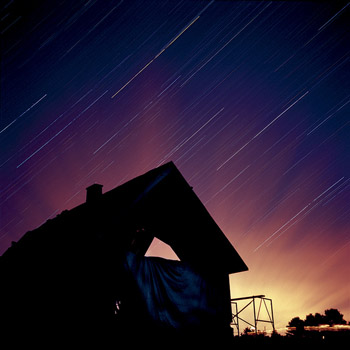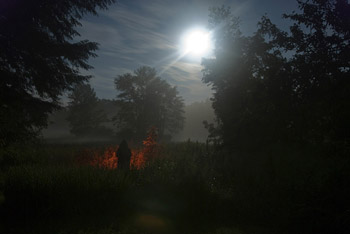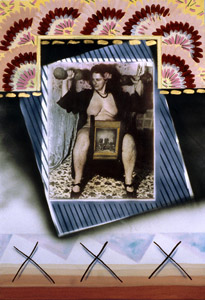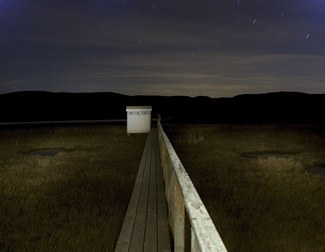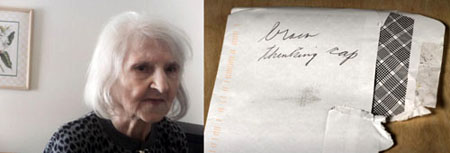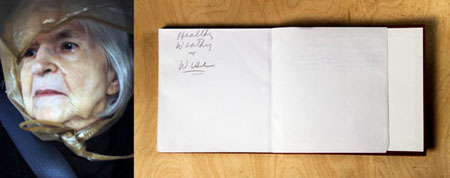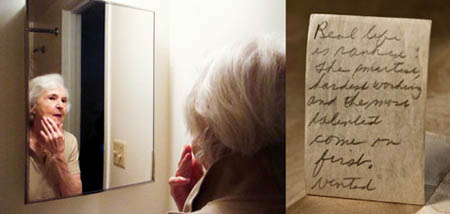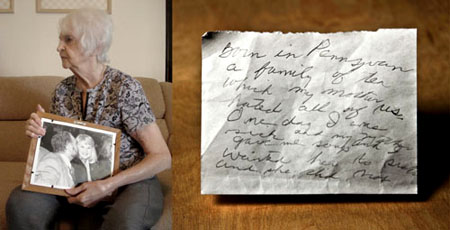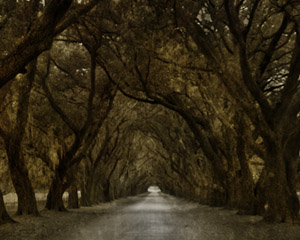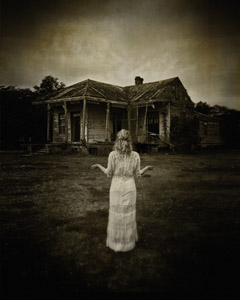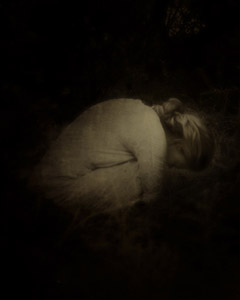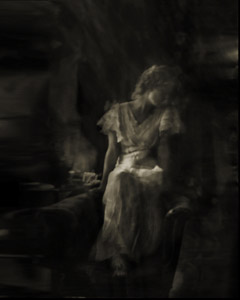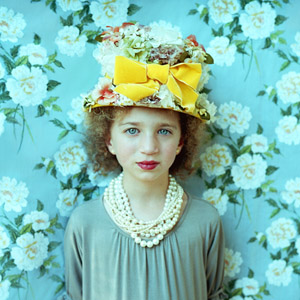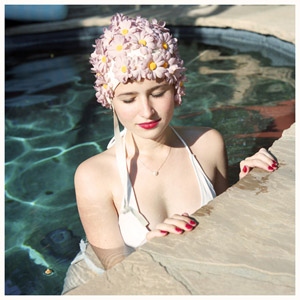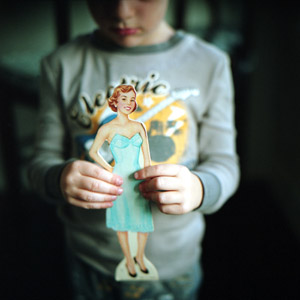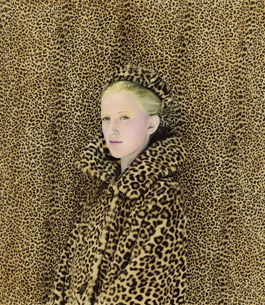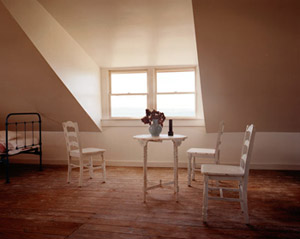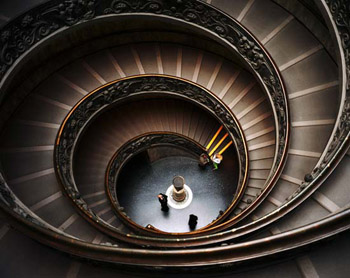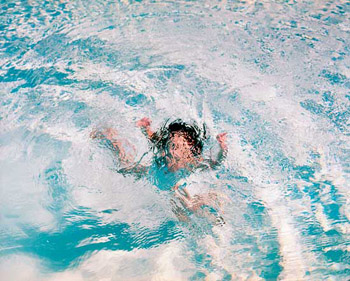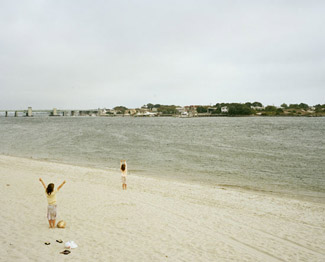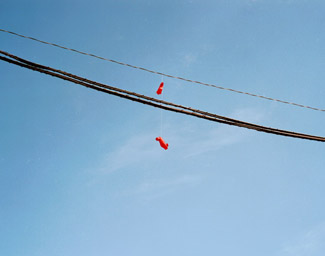Tag Archives: 30 x 30
30 By 30: Kay Kenny / Judy Dater
30 Women Photographers and the Women Photographers Who Inspired Them
A Blog Series in Honor of Women’s History Month, March 1 – 31
Kay Kenny is a painter and photographer who lives and works in New Jersey. She has a BFA and MFA from Syracuse University, and an MA from Rutgers University, all in the visual arts. She has taught photography for over fifteen years at New York University and the International Center of Photography.
Kenny has had numerous solo shows, most recently in Taiwan, Colombia, Texas and New York City. In 2009, she won a Lucie Award Honorable Mention for Fine Art Photography, and is a three-time recipient of an NJSCA fellowship.
Recent publications about her work include Photography’s Antiquarian Avant-Garde, by Lyle Rexer, and Light & Lens: Photography in the Digital Age and Photographic Possibilities by Robert Hirsch. Kenny also writes art criticism and articles about the visual arts for various magazines.
Tell me about the woman photographer who inspired you.
KK: Photography as an art form began rather abruptly for me. As a graduate student, I was a painter about to register for a printmaking class when my advisor took me aside and asked me to register for his color photography class. This was long before digital, and I had never been in a darkroom or had any formal training in photography. He planned to have me teach the class the following semester. My history of art did not even include photography. The result was a flurry of reading-every photo book I could get my hands on. I soon found that my approach to photo imaging was profoundly different from the typical male photographers in the books I read.
By the 1970′s the feminist second wave was in full swing, and photography as a fine art also began to emerge in galleries devoted to contemporary photography (Witkin Gallery,1969 and Light Gallery, circa 1973). However, publications remained the major source of information about photographers. Women photographers were scarcely mentioned in the various anthologies: Nathan Lyons’ Photographers on Photography (Prentice Hall/George Eastman House, 1966) includes two contemporary women: Berenice Abbott and Dorothea Lange; both of whom are included with twelve other women photographers among the hundred plus men cited in Beaumont Newhall’s History of Photography (5th Edition, 1993).
Groundbreaking books such as The Woman’s Eye by Ann Tucker (Knopf Publishing, 1973), provided the few opportunities to view contemporary women photographers. Judy Dater was one of the few whose work was available in print at the time, and her images immediately resonated with me. Those early portraits of hers from the 1960′s: those women-they had power! Their gaze was direct; their nudity neither sublime nor apologetic; their settings straight forward and familiar. I also sensed an offbeat sense of humor-a subtle parody of the male gaze caught in the act.
In those years, my photography began to develop a very personal narrative style using models, especially women, as part of a storyboard of text and image. Dater’s portraits began to creep into my direction and styling efforts. At times, it seems as if I was directly paraphrasing her images in my narratives. Since I worked with text, and processed my images by the gum bichromate process, Dater’s influence melded with that of Bea Nettles (whose work was also included in The Woman’s Eye and was kind enough to teach me the gum process) and the Surrealist women I admired, such as painters Leonora Carrington and Leonora Fini, and the photographer Lee Miller. The surrealist women were largely invisible at that time, little of their images and information were included in textbooks. It was through a lecture I happened to attend by art historian, Gloria Orenstein, that I learned of these women in the early 1970′s.
Manipulated photography such as mine was not an easy sell in those days: non-silver was a fringe movement in itself and montaged contemporary non-silver images did not fit into any category among photo galleries dedicated to educating the public about photography as a fine art. Foto Gallery in New York City and other non-profit spaces were the exceptions.
By the 1980′s, photography began to open up to new approaches as well as acknowledging more women photographers in exhibits and print. Today there seems to be a second wave of interest in non-silver as well as a major shift in the way photography is incorporated into the fine arts landscape. Perhaps it is the digital revolution that allows for the really large printing of photographic images and digital manipulation; perhaps it is the inclusion of photography in galleries once dedicated to painting and works on paper. Whatever the reason, some barriers no longer exist for photographers working outside the mainstream.
Do barriers remain today for women photographers?
Any advice for women photographers today?
KK: While getting a monograph published by a noted publisher may be a matter of money and influence, there are so many other opportunities for work to be seen. A website that is up-to-date, well constructed and linked to other sites is frankly so much more effective that a book in the remainder bin at Barnes & Noble. Of course, with books-on-demand companies such as Blurb, creating and publishing a book as a showcase of one’s work is a fabulous opportunity.
As for my own work: over the last decade, it has evolved into night landscapes. These images are a good deal easier to sell and exhibit than the gum bichromate narratives. However, there is still a little of Judy Dater’s earlier influence there and I have not abandoned portraiture: it is just a little more dimly lit.
Judy Dater was born in Hollywood in 1941. She began her studies at U.C.L.A., then transferred to San Francisco State. There she took a photography course with Jack Welpott, with whom she had an affair and later married. Her early work, created as the Women’s Movement was taking off, challenged the stereotypical roles of women in society. She presented the female form in a stark and confrontational manner-naked, not nude-and often turned the camera on herself in various guises and scenarios.
In 1975, Dater and Welpott published Women and Other Visions. They divorced in the early 1980′s.
Dater developed a close friendship with Imogen Cunningham, and published Imogen Cunningham: A Portrait after the photographer’s death. Included in the book is her famous image of Cunningham photographing a nude model, Twinka Thiebaud (daughter of artist Wayne Thiebaud), in the woods.
Dater currently lives in Berkeley with her husband, Jack von Euw.
- Catherine Kirkpatrick, Archives Director
______________________________
30 By 30 blog series:
Intro: Dianora Niccolini / Women of Vision
Lauren Fleishman / Nan Goldin
Darleen Rubin / Louise Dahl-Wolfe
Dannielle Hayes / Diane Arbus
Meryl Meisler / Via Wynroth
Shana Schnur / Louise Dahl-Wolfe
Claudia Kunin / Imogen Cunningham
Gigi Stoll / Flo Fox
Robbie Kaye / Abi Hodes
Alice Sachs Zimet / Lisette Model
Juliana Sohn / Sally Mann
Susan May Tell / Lilo Raymond
Nora Kobrenik / Cindy Sherman
Caroline Coon / Ida Kar
Lisa Kahane / Jill Freedman
Karen Smul / Dorothea Lange
Claudia Sohrens / Martha Rosler
Laine Wyatt / Diane Arbus
Ruth Fremson / Strength From the Many
Greer Muldowney / Lee Miller
Rachel Barrett / Vera Lutter
Aline Smithson / Brigitte Lacombe
Ann George / Josephine Sacabo
Judi Bommarito / Mary Ellen Mark
Kay Kenny / Judy Dater
Editta Sherman / The Natural
Patt Blue / Ruth Orkin
Vicki Goldberg / Margaret Bourke-White
Beth Schiffer / Carrie Mae Weems
Anonymous / Her Mother
30 By 30: Judi Bommarito / Mary Ellen Mark
30 Women Photographers and the Women Photographers Who Inspired Them
A Blog Series in Honor of Women’s History Month, March 1 – 31
Judi Bommarito is an adjunct faculty member at the College for Creative Studies in Detroit. She is the recipient of numerous awards, including the Grand Prize and Juror Selection in PWP’s 36th Anniversary International Open Call, Best of Show at the St. Lawrence Gallery, Third Place at Paint Creek Center for the Arts’ Annual Celebrate Michigan Artists Exhibit, and First Place in the Scarab Club’s Annual Michigan Photography Exhibition. She recently worked on the photography and design for the music CD Open Domain, and her photo emulsion collage was included in Kathleen Thormod Carr’s book Photo Manipulations.
Which woman photographer inspired you most?
JB: Mary Ellen Mark’s work has had the biggest impact on me at this point in my life, especially the way she is able to capture the personal and revealing exchange between the subject and herself. Then she is able to transfer that exchange to the viewer, and presents us with a multitude of universal human emotions: be it humor, uncertainty, anger or pride, we all connect to the emotion portrayed. Her unfailing ability to capture this range of feeling is not something everyone is successful in achieving.
Her work also consistently invites the viewer into the space. We never feel as though we are imposing. I think that is a very important dynamic, as it contrasts the sensitive subject matter of her work.
When I began photographing my mother for the series, The Journey into the Darkness-My Mother’s Life with Schizophrenia, I struggled with the concept of misrepresentation and exploitation of her life. Then I discovered her letters-the words she cannot speak. I knew at that moment when viewed together, the work would honor my mother’s life, giving her tormented existence validity. At that point, I went to Mary Ellen Mark’s Ward 81 series. There I found a great sense of comfort knowing she experienced that same darkness, yet also discovered quiet beauty within each woman, just as I do with my mother. It was that knowing that inspired me to submit images to the PWP Open Call, in which Mary Ellen Mark was the juror. Her recognition of my work with grand prize and juror’s selection awards has affirmed my work on a meaningful level for me.
When did you become aware of her and what did she enable you to do?
JB: I had known of Mary Ellen Mark and her work for some time. Upon visiting New York in May, 2001, I went to see American Odyssey at ICP. At the time, I was familiar with her series The Damm Family, particularly the image The Damm Family in Their Car. I was interested in seeing more from this series, and when I saw the image of Crissy, Dean and Linda Damm, I was deeply moved. The three are lying in bed, tightly nestled together. On the left side of the bed is an old tattered nightstand with drug paraphernalia, a plastic Virgin Mary, and a bottle of soda. The parents appear to be sleeping, but Crissy is awake, both hands clutching her Dad’s arm. Her eyes are open and stare blankly into space. Every single time I look at that gaze, I am overcome with emotion. Being a mother of three, I wish for my children the things we assume all mothers want for their kids-innocence and happiness. Crissy’s eyes depict the opposite. She is deprived of this innate right of childhood. This image sears through my soul.
Many women who sought jobs in photography in the 60′s and 70′s faced discrimination. Have you ever encountered this?
JB: I believe that discrimination towards women still exists, but rather than feeling victimized by it, I prefer to use it as a motivator for empowerment. A large portion of my work confronts issues as they relate to “Mother€ from both roles: being one and having one. I do not view the work as gender based. I prefer to compare feminine (natural and sensitive) and masculine (strong and assertive) as traits every human should possess to truly have balance. Sometimes this interpretation gets misunderstood.
The universal longing we all search for is acceptance. Unfortunately, this isn’t always found in our environment. This displacement may lead to feelings of inferiority, which are merely subconscious projections from the offender, as they are often manifestations of their own inadequacies. This behavior should not be tolerated. Be pro-active, find the right audience-it does exist. Often times when in a discriminating situation, a favorite quote comes to mind, “Ego and awareness cannot co-exist.€ This immediately makes the negative experience seem small and meaningless, very empowering!
Any advice to other women photographers?
JB: Be adaptable. Things always change-let them. Life is like that. When work originates from the heart, it will find it’s place. To quote Harriet Beecher Stowe, “Never give up, for that is just the place and time that the tide will turn.€
_________________________________________________
Mary Ellen Mark is a landmark documentary photographer. She was born in 1940 in Philadelphia, and earned a B.A. from the University of Pennsylvania and an M.A. from the Annenberg School of Communication. After traveling to Turkey on a Fulbright Scholarship, she opened a studio in New York City.
Her first groundbreaking project was a photo essay on London heroin addicts that appeared in Look Magazine. Other magazine assignments followed, as well as work on the sets of films like Alice’s Restaurant, Carnal Knowledge, Apocalypse Now, and One Flew Over the Cuckoo’s Nest. Mark lived and photographed inside the facility where the latter film was shot; the resulting book and exhibition, Ward 81, furthered her reputation as the great documenter of the dispossessed.
Mark has an enduring fascination for India, and has returned to photograph its various cultures including prostitutes in Mumbai (resulting in the book Falkland Road), the humanitarian work of Mother Teresa, and Indian circuses.
Mark has published seventeen books, and her work has been featured in major museums and publications around the world. Her numerous awards include the Cornell Capa Award from the International Center of Photography, the Infinity Award for Journalism, an Erna & Victor Hasselblad Foundation Grant, and a Guggenheim Fellowship.
- Catherine Kirkpatrick, Archives Director
______________________________
30 By 30 blog series:
Intro: Dianora Niccolini / Women of Vision
Lauren Fleishman / Nan Goldin
Darleen Rubin / Louise Dahl-Wolfe
Dannielle Hayes / Diane Arbus
Meryl Meisler / Via Wynroth
Shana Schnur / Louise Dahl-Wolfe
Claudia Kunin / Imogen Cunningham
Gigi Stoll / Flo Fox
Robbie Kaye / Abi Hodes
Alice Sachs Zimet / Lisette Model
Juliana Sohn / Sally Mann
Susan May Tell / Lilo Raymond
Nora Kobrenik / Cindy Sherman
Caroline Coon / Ida Kar
Lisa Kahane / Jill Freedman
Karen Smul / Dorothea Lange
Claudia Sohrens / Martha Rosler
Laine Wyatt / Diane Arbus
Ruth Fremson / Strength From the Many
Greer Muldowney / Lee Miller
Rachel Barrett / Vera Lutter
Aline Smithson / Brigitte Lacombe
Ann George / Josephine Sacabo
Judi Bommarito / Mary Ellen Mark
Kay Kenny / Judy Dater
Editta Sherman / The Natural
Patt Blue / Ruth Orkin
Vicki Goldberg / Margaret Bourke-White
Beth Schiffer / Carrie Mae Weems
Anonymous / Her Mother
30 By 30: Ann George / Josephine Sacabo
30 Women Photographers and the Women Photographers Who Inspired Them
A Blog Series in Honor of Women’s History Month, March 1 – 31
Ann George is an award-winning fine art photographer born and raised in Louisiana. For many years she worked as a critical care nurse, but when she was diagnosed with Multiple Sclerosis, turned seriously to photography. Since then George’s work has won numerous awards and been exhibited widely. She lives with her husband and four sons in Shreveport, Louisiana, and is represented by Nevares Fine Art in New York.
Which woman photographer inspired you most?
AG: Josephine Sacabo. While strolling around the New Orleans French quarter one day in 1995, I happened to wander into the The A Gallery For Fine Art Photography. Josephine’s Susana San Juan series was represented there and it took my breath away! The Susana San Juan image was staring into my soul. I felt a fluttering inside my middle like a warm glowing sensation. I moved to the next and the next as if I was floating. El Vuelo, El Arbolito, El Final, and El Camino (which I now proudly own), all called to me. I never knew that photographs could make one feel that way. They were introspective and mysterious and reached down deep. That day I understood what all the fuss over art was all about. I never had such an appreciation for it until then. It was right there at that moment staring at Susana San Juan that I knew that one day I wanted to learn how to photograph in a way that made me feel like that. To tell you the truth, I have never reached that same sensation with my own work. I think it will be something I continue to chase as I improve and perfect and try new things, always moving forward toward that goal. Little did I know at that point that it would not just be the work that inspired me, but the woman as well. The years between that first epiphany and actually picking up the camera myself were many. During that time, I learned about the woman and her work that stirred my soul. I learned that the genesis for Josephine’s work was literature and poetry, that the Susana San Juanseries was a depiction of a heroine Susana San Juan, written by Juan Rulfo, a Mexican novelist, whose entire discourse is one of memory and delusions, delivered from her tomb.
I followed Josephine’s new works, never dreaming that one day I would know her not only as my inspiration but also as a mentor and as a friend.
And so, as it came to pass, years later I had my opportunity to delve into photography and it became my passion. I learned from some of the greatest woman photographers and teachers such as Joyce Wilson and Carol Andrews. Joyce inspired me with her ability to depict the female form as art, and I moved to digital and learned Photoshop. I tried new things always reaching for Susana San Juan. I never felt like my work had merit. I think it was because that elusive impact was missing to me in my work. As grace provided, Josephine was giving a polymer photogravure workshop. I signed up, amazed at the opportunity to meet my hero. It was during this time that Josephine saw my work and pushed me out of the nest. She became my biggest cheerleader and had a no nonsense attitude toward my self-doubt. “Get on with it Girl, you are the real deal,€ she said in her delightful, slight Spanish accent. She invited me back to stay with her and work, which of course I did. It was the most pivotal point in my photographic and personal life. My work is in the world because of Josephine. Her confidence in me is the only reason that you are reading my words. She told me to get it out there and as much as I felt unworthy I could not ignore her. I hit the ground running and since then her words have been validated by others. I hope one day not only create an image that truly moves me but to be “A Josephine€ to another woman photographer.
Can you talk about the tough choices women have to make between their personal and professional lives?
AG: It is true that we want it all. At least it is for me. I want to be successful at all I do as a wife, as a mother, as a nurse, and a photographer. It is impossible to give all to everything, but I tried. Believe me it wasn’t pretty. I decided that I must set clear priorities for myself and live by them. Once I outlined these priorities, my faith, my family and then my photography, and set real boundaries for myself, I was comfortable saying no to photography as the need arose. In fact, I put it aside for three years. It was amazing that once I was in line with these priorities, and first things came first, photography found its time.
How have events in your personal life affected your art?
AG: Photography was not my first passion. I was a critical care nurse developing a line of hospitals that dealt with only the sickest of the sick. I thought it would always be my life’s work. I always loved photography and drooled over beautiful work, but running the hospitals and being a mommy of four young boys was more than I could say grace over. That is until I myself became ill myself and was diagnosed with Multiple Sclerosis. The intensity at which I had to work was too great for my body to have anything left for my family, and so I had to step away from my beloved career. It was then that I truly turned to photography. Out of ashes comes beauty.
Any advice for women photographers today?
AG: Yes! Try to:
- Find your hero and follow them.
- Make a folder on your desktop of images that inspire you.
- Set goals for yourself with a timeline
- Enter a contest with a theme or name your next project. Narrowing down the universe is so helpful when you are trying to create something from nothing. You have a place to start from.
- As a woman, you were given a unique genetic makeup to be able to multitask. Don’t confuse this with a license to do too much. Being overwhelmed does not help the creative process. Saying no is an option!
- Trust in your self: women have a unique perspective to the art form of photography. Trust in your instincts as a woman.
- Do not underestimate yourself. Women are powerful creations with the ability to do anything!
- Expect to get stuck. Understand that everyone has dry times. Move on to something else for a bit and come back to your work. I usually clean out a closet. By the way, my closets are now very organized now that I am a photographer!
- Everything is a season and the blooming of your work will always come. Just tend the garden and be disciplined in your learning.
- Teach others. Share everything you know. Don’t fear others copying you. It is unlikely that they can. The way that I developed my “style€ is trying to emulate the work that I loved.
- Keep your foot on the gas pedal and always move forward, it does not matter how fast.
- When you feel that everything you have to accomplish is just too much it usually is. You can only eat an elephant one bite at a time. Elephants are tough so chew each bite slowly.
- Go to photography events, portfolio reviews, and workshops. It is a great place to meet other woman that love to do what you do and can share your highs and lows. It is where I have met some of my dearest closest friends and found my most ardent cheerleaders.
- Never ever take yourself to seriously. Leave that to the men!
- Set your priorities and be disciplined in them. Faith First works best for me.
- I love this quote from Seth Godin and think of it when I struggle with my work or all the things that go along with it. “Art is the product of emotional labor. If it’s easy and risk free, it’s unlikely that it’s art.€
Josephine Sacabo is a New Orleans-based photographer originally from Laredo, Texas. She was educated at Bard College, and worked in France and England, initially in the photojournalistic tradition. As her style evolved, it became more personal, and she drew inspiration from poets like Rilke, Baudelaire, Mallarmé, Pedro Salinas, Vincente Huiobro, Juan Rulfo, and Sor Juana Ines de la Cruz, as well as from New Orleans itself.
Sacabo’s work has been exhibited widely, including solo shows at the Woodstock Center for Photography, the Contemporary Arts Center in New Orleans, and the John Stevenson Gallery in New York. It is also in many permanent collections, including those of the Art Institute of Chicago, the Bibliothéque Nationale of France, the Boston Museum of Fine Arts, George Eastman House, the Metropolitan Museum of Art, the Museum of Modern Art, and the Whitney Museum of American Art.
In an e-mail this week, Sacabo said: “I am very proud of Ann’s accomplishments. She’s been my star pupil for sure.”
- Catherine Kirkpatrick, Archives Director
______________________________
30 By 30 blog series:
Intro: Dianora Niccolini / Women of Vision
Lauren Fleishman / Nan Goldin
Darleen Rubin / Louise Dahl-Wolfe
Dannielle Hayes / Diane Arbus
Meryl Meisler / Via Wynroth
Shana Schnur / Louise Dahl-Wolfe
Claudia Kunin / Imogen Cunningham
Gigi Stoll / Flo Fox
Robbie Kaye / Abi Hodes
Alice Sachs Zimet / Lisette Model
Juliana Sohn / Sally Mann
Susan May Tell / Lilo Raymond
Nora Kobrenik / Cindy Sherman
Caroline Coon / Ida Kar
Lisa Kahane / Jill Freedman
Karen Smul / Dorothea Lange
Claudia Sohrens / Martha Rosler
Laine Wyatt / Diane Arbus
Ruth Fremson / Strength From the Many
Greer Muldowney / Lee Miller
Rachel Barrett / Vera Lutter
Aline Smithson / Brigitte Lacombe
Ann George / Josephine Sacabo
Judi Bommarito / Mary Ellen Mark
Kay Kenny / Judy Dater
Editta Sherman / The Natural
Patt Blue / Ruth Orkin
Vicki Goldberg / Margaret Bourke-White
Beth Schiffer / Carrie Mae Weems
Anonymous / Her Mother
30 By 30: Aline Smithson / Brigette Lacombe
30 Women Photographers and the Women Photographers Who Inspired Them
A Blog Series in Honor of Women’s History Month, March 1 – 31
Aline Smithson worked as a New York fashion editor with many photography greats before stepping behind the lens herself. Her work has been featured in many publications including the PDN Photo Annual, Communication Arts Photo Annual, Eyemazing, Artworks, Lenswork Extended, Shots, Pozytyw, and Silvershotz magazines. Exhibitions include solo shows at the Griffin Museum of Photography, the Fort Collins Museum of Contemporary Art, The Tagomago Gallery in Barcelona, and Wallspace Gallery in Seattle. She writes and edits the blog, Lenscratch, and is a contributing writer for Diffusion, Too Much Chocolate, Lucida, and F Stop Magazines. Nominated for The Excellence in Photographic Teaching Award in 2008, 2009, and 2010 and for The Santa Fe Prize in Photography in 2009, she considers her children her greatest achievement.
Which woman photographer inspired you most?
AS: It would be very difficult to select just one-Sally Mann gave me permission to photograph my children, Cindy Sherman inspired me to work conceptually, Diane Arbus showed me a way of working that resonated with my sensibility, and Brigette Lacombe taught me to look for authenticity in my work. Each of these photographers had very definite points of view and unique ways of working and each inspired me.
When did you become aware of her and what did she enable you to do?
AS: I first discovered Brigette Lacombe‘s work when I was a fashion editor in New York. At that time, I was looking at tons of fashion photography and worked with lots of terrific fashion photographers, but somehow Brigette‘s photographs always stood apart. Her images were not of glammed-up fashion models, but of women who just happened to be wearing something fashionable. She always found the person she was photographing, whether it was a model, celebrity, or man on the street. To this day, I have thought if I could have one person take my portrait, it would be Brigette. There is something about her imagery that is real, stripped down, and soulful. For me, her work stands out for its combination of simplicity and power.
When I became a photographer myself, I looked for that same authenticity in my own work. Brigette has set the bar high, and her work represents qualities that I hope my photographs, especially my portraits, can reflect. For me, her work stands out for their combination of simplicity and power.
Can you talk about the tough choices women have to make about their personal and professional lives?
AS: What I have learned is that we can’t have it all…at least not at the same time. The constraints of family and work have forced me to use my time more efficiently and creatively. It gives me more time to think about what I want to say or create, and when time allows, the result is very direct and focused. I consider it a privilege to be a photographer, to have a visual language to share my thoughts and ideas.
How have events in your personal life affected your art?
AS: Raising a family and experiencing firsthand the deaths of my parents and best friend have given me a greater sensitivity to what I want to say as an artist and how I want to engage in my community. I know how precious life is and I want to celebrate life and make photographs that are irreverent, real, and poignant. And I understand how important it is to support and give back to a community that has been so good to me.
Any advice for women photographers today?
AS: Tell your stories-create imagery that reflects your world and life, whether it be domestic or far flung. Celebrate a woman’s perspective and power. Be genuine, gracious, and thank everyone who pushes you a little farther up the ladder. Shoot what you know.
___________________________
Brigitte Lacombe is a French photographer living in New York. She is known for her portraiture and photography of film and stage sets, including Fellini’s Casanova, All the President’s Men, Close Encounters of the Third Kind, and Glengarry Glen Ross.
Her work has been featured in many publications including Vanity Fair, The New Yorker, The New York Times Magazine, TIME, GQ, and Condé Nast Traveler, as well as two monographs. She won the Eisenstaedt Award for Travel Photography in 2000, and in 2010, the Art Director’s Club Hall of Fame Lifetime Achievement Award for Photography.
- Catherine Kirkpatrick, Archives Director
______________________________
30 By 30 blog series:


